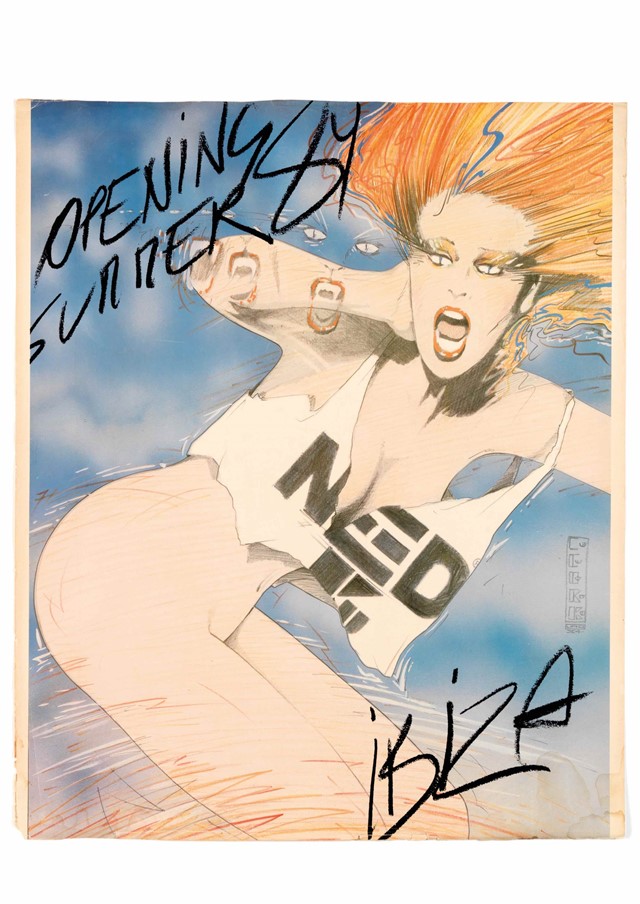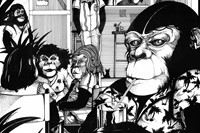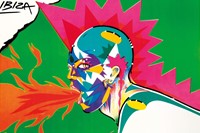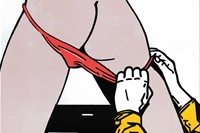The artist worked on the island between 1977 and 1990, creating vivid flyers for its cafés, bars and nightclubs – images which are brought together in a new book published by IDEA
In the 1980s, Ibiza was an island of secrets. A sun-soaked speck of land in the middle of the Balearic Sea, it was a savvy hedonist’s paradise: exclusive, glamorous and remote, with no internet and barely any inbound commercial flights. What happened in Ibiza, stayed in Ibiza.
Yves Uro was one of these secrets. The Spanish graphic artist worked on the island for over a decade, making flyers for its cafés, bars and nightclubs. His vibrant work – although little known today – ended up being an integral part of Ibizan club culture, and his output was prolific: between 1977 and 1990, Uro made 400 posters, all of which were either drawn, painted or airbrushed by hand.
Uro tragically passed away in 1995, but his work has not been forgotten. 26 years after his death, IDEA has teamed up with the artist’s sister, Catherine, to publish the first official collection of his work. The book, titled Urovision, is released this month and contains 100 of Uro’s poster designs from across the 1970s, 80s and 90s. Here, in an exclusive excerpt from the book, Catherine talks about the artist’s life and work on Ibiza – and the fascination the island held for him.
You two grew up in the east of France, a region with an industrial, coal-mining past. How did Yves end up in Ibiza?
Catherine Uro: In 1975, Yves lived with members of the rock group Atoll in Metz, where he had attended the Beaux-Arts school (but dropped out after two years). Aged 21, he had been a free spirit all his life, and I knew he was looking for a way out of eastern France with its coal, smoke, greyness and freezing temperatures. His friend Nicole knew about the enchanting island of Ibiza and suggested taking Yves and his friends there. The Lorraine region couldn’t hold a candle to the sun of Ibiza.
But before that, he was supposed to complete his military service, even if he came out in a cold sweat just thinking about it. He absolutely did not want to do it, so much so that he went to a psychiatrist armed with his drawings and explained that he was incapable of living in a group, putting up with living in barracks, and above all, marching. Luckily he was exempted from service on 11 May 1976, and three days later, on 14 May, he left for Ibiza for good.
Did Yves find the paradise he was looking for on that island?
CU: When he discovered this little part of Spain, he immediately said, “This is where I want to live.” And he had everything there to please him: sun, freedom, a relaxed atmosphere. Ibiza, the island where everything would be possible. It was to be his land of exile, where his imagination could be free and creative. Along with his friends, he was part of a renewal of Spanish life, in cinema, photography, comic books and music. Youth developed a new vision of life there; nocturnal, in bars and clubs, it allowed new talent to express itself. This new wave that brought liberation and democratisation after the years of Franco’s dictatorship was called the Movida.

When did he start making his art? How did it all begin?
CU: On Ibiza, he sold his drawings, designed shops, and began to produce posters for clubs, shops and restaurants. His friends Raymond and Lidia came out to join him; they would remain like siblings forever. In 1977, with two partners, he created Hay Tiempo, a printing workshop that he almost called Gato – cat in Spanish – because he liked the feline spirit, which adapts to any environment. It was the beginning of collaborations with other artists, including Nacho, Pico, Luis and Santis, and the birth of his most beautiful, richly detailed posters. He rented a crane to lift the printing machines up to the first floor and installed a photography lab. He printed everything: posters, stickers, fabrics using the three- and four-colour printing processes. Later, he would begin offset printing. The island’s first screen-printing workshop – with its punk logo of a fried egg pierced by a safety pin – was an instant, roaring success. Everyone wanted Hay Tiempo.
“[These are] posters from another time, one that will never return, a time when we hoped and believed in a different idea of society made up of a mix of nationalities” – Catherine Uro
What was Yves like as a person and how did it show in his art?
CU: He was a secretive character with multiple sides, mixing styles and allusions in his art. He left us posters in front of which we still ask thousands of questions, which often remain unanswered. Posters from another time, one that will never return, a time when we hoped and believed in a different idea of society made up of a mix of nationalities. Posters for short-lived club nights, seen only by holidaymakers thirsty for music and dancing.
Can you talk a bit more about Yves’ work and oeuvre? Why do you think it was so significant?
CU: Over 15 years, Yves created more than 300 posters, many of them for the renowned Ku Club, for whom he also designed a line of perfume and T-shirts. It was known as the biggest club in the world and even featured in the Guinness Book of Records. During the winter, when the summer season was over, he worked on interior design projects for clubs in Brussels and Paris, as well as for the brand People From Ibiza. On the island, he could let his “gentle madness” – as he called it – run free. The atmosphere and context there made anything possible; there were no limits.
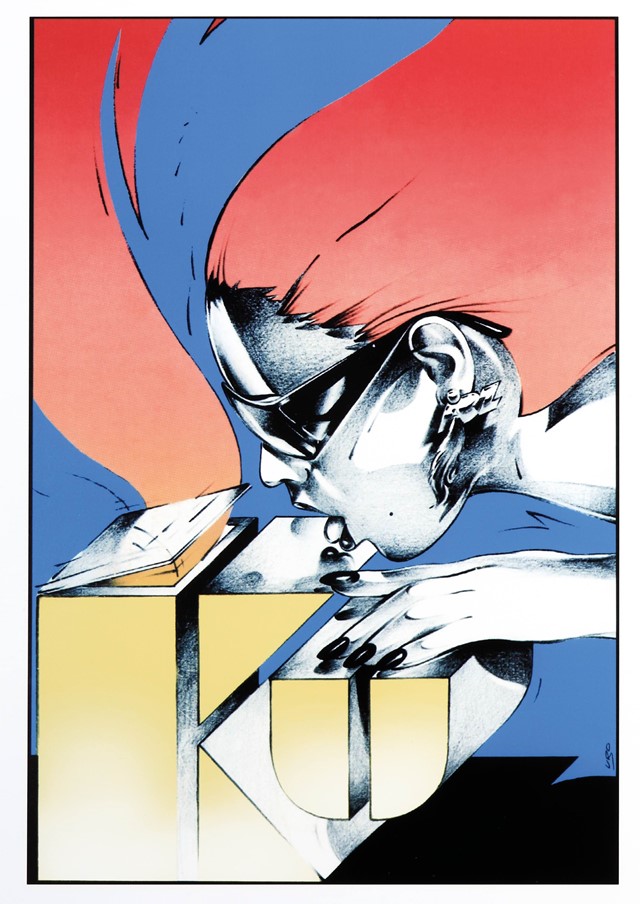
What inspired Yves?
CU: Humour, sensuality and a futurist vision were all central to his graphic-design style. Without a shadow of a doubt, he helped create that unique Ibiza vibe in the 1980s. There was also his strong friendship with Brasilio de Oliveira, a key player in Ibiza’s biggest club nights who sadly passed away last December. Together they organised such wonderful parties! As he did with Pepe of Gráficas Pitiusas, who paid Yves homage in 1998 at the opening of a new print workshop. More than 350 people were there that day and had the pleasure of seeing some of Yves’ most beautiful projects.
What was it about Ibiza that held such fascination for Yves?
CU: Ibiza was more peaceful before it became a musical Mecca. The legend says that Calypso offered Ulysses the chance to stay with her and become immortal, ageless, with unending pleasure. Ulysses declined her offer to return to mortal Penelope and endure the trials of life. Does Ibiza have the power to render people immortal during their stay?
Yves Uro: Urovision is available now on IDEA.
